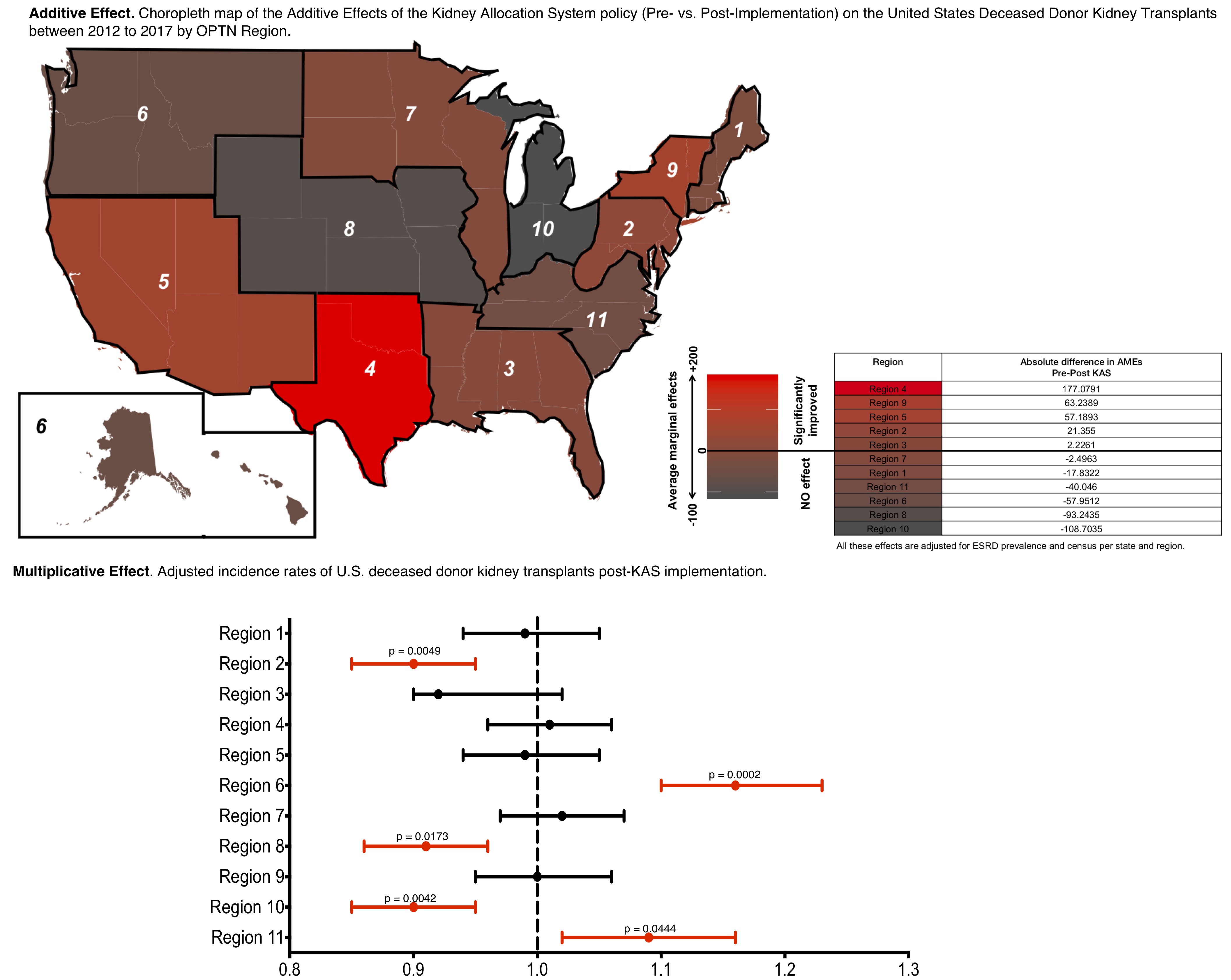Regional Disparities In The Transplant Rates Across Unos Regions Pre- And Post-kidney Allocation System Policy Implementation
Massachusetts General Hospital, Boston, MA
Meeting: 2019 American Transplant Congress
Abstract number: 13
Keywords: Allocation, Donation, Kidney
Session Information
Session Name: Concurrent Session: Kidney Deceased Donor Allocation I
Session Type: Concurrent Session
Date: Sunday, June 2, 2019
Session Time: 2:30pm-4:00pm
 Presentation Time: 2:42pm-2:54pm
Presentation Time: 2:42pm-2:54pm
Location: Ballroom B
*Purpose: Geographic distribution of organs for transplant is a critical component of the Organ Procurement and Transplantation Network (OPTN) policies. However, there is no single framework for allocation that is currently employed for all organs. For kidney, the new Kidney Allocation System (KAS) aimed to address some of these core needs of deceased donor (DD) allocation at the same time intended to improve longevity matching between donor kidneys and recipients and to broaden access for historically disadvantaged populations. Currently, the ongoing debate on OPTN adoption of a single framework of allocation exists, especially from pieces of evidence providing significant differences in organ allocation regarding geography. To aid in this debate, here we examined the regional adoption towards providing evidence of KAS variability and its effect across OPTN regions and to argue for the need of additional considerations in the kidney organ allocation policy.
*Methods: We abstracted regional and state data on DD from the OPTN, ESRD prevalence from the U.S. Renal Data System (USRDS), and US Census, and constructed Poisson models to estimate kidney transplant incidence ratios (IRs) by region compared to the national average between 2012-2017 and graphed them in a forest plot. We also tested the KAS additive effect by average marginal effects (AMEs), specifically in the post-implementation period (2015 – 2017) regionally and plotted our findings in a choropleth map (lighter colors represent regions with the highest improvement and darkest null effects post-KAS).
*Results: KAS impact was different across regions in two ways. First, the multiplicative effect of KAS post-implementation, measured by IRs, significantly increased the base rate by a factor of 1.16 (p = 0.002) and 1.09 (p = 0.044) in regions six and ten respectively. However, in regions two, eight, and ten, the effect was opposite with significant decreases in the kidney transplant rate of 10% (p = 0.005), 9% (p = 0.004), and 10% (p = 0.004) respectively. Second, the additive effect of KAS (2015 onward), measured by AMEs, significantly improved the expected mean number of transplants in regions 2-5 and 9 (Figure). However, again regions ten and eight there was no significant increase in the expected organ transplants compared to the national (p<0.0001, both cases).
*Conclusions: KAS was most impactful in Southern -states with both IRs and AMEs were higher than the national average. In comparison, the mid-west and north-west regions had the lowest AMEs. We argue that this heterogeneity in the implementation of the new Kidney Allocation Policy across the United States OPTN regions is an argument in favor of a revising the allocation policy. Furthermore, KAS regional effect warrants exploration, specifically to identify characteristics driving the increase in transplantation so that new public policies can address these issues.
To cite this abstract in AMA style:
Perez-Ortiz AC, Heher E, Elias N. Regional Disparities In The Transplant Rates Across Unos Regions Pre- And Post-kidney Allocation System Policy Implementation [abstract]. Am J Transplant. 2019; 19 (suppl 3). https://atcmeetingabstracts.com/abstract/regional-disparities-in-the-transplant-rates-across-unos-regions-pre-and-post-kidney-allocation-system-policy-implementation/. Accessed December 15, 2025.« Back to 2019 American Transplant Congress

